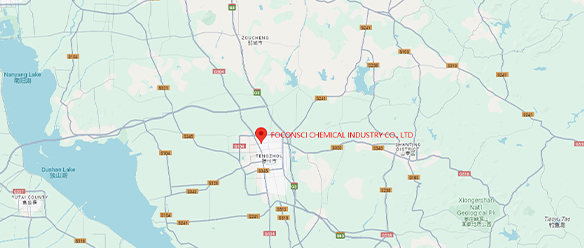THEIC: Innovative Industrial Additives Improve Production Efficiency and Product Quality
Today, as high-performance manufacturing processes continue to improve, companies' requirements for additives have long gone beyond basic auxiliary functions.
THEIC (1,3,5-Tris(2-hydroxyethyl)cyanuric acid) CAS NO.: 839-90-7, as a trifunctional compound with unique structure and reactive activity, is gradually becoming a key component in industrial formulations to improve thermal stability, crosslinking density and product performance.
Especially in the fields of powder coatings, flame retardant plastics, electrical insulation materials and UV light-curing resins, THEIC can not only effectively optimize the curing process and enhance mechanical strength, but also meet environmental protection standards such as RoHS and REACH, becoming the preferred multifunctional performance enhancer in many high-end manufacturing scenarios.

Crosslinker in thermosetting coating system: shorten curing time and improve adhesion
THEIC contains multiple hydroxymethyl groups in its molecular structure, which is very easy to participate in etherification and esterification reactions, making it an ideal crosslinking monomer or co-crosslinker.
In powder coating formulations, when used with polyester resins, THEIC can significantly reduce the curing temperature to less than 160°C, which is 10~20°C lower than traditional Trimethylolpropane (TMP) or pentaerythritol, thereby saving 8%-12% of energy consumption.
In addition, the hardness of the cross-linked coating film of THEIC can reach an average of more than 2H, and the adhesion reaches level 0 (ISO 2409 standard), which is particularly suitable for application scenarios that require impact resistance and high adhesion, such as automotive wheels, high-end home appliance housings, and industrial steel structure anti-corrosion systems.

Synergistic additives in flame-retardant plastic modification: Enhanced thermal stability and flame retardant grade
In polyamide (PA), polycarbonate (PC) and PBT engineering plastics, THEIC, as a synergist of nitrogen-containing intumescent flame retardant systems, can form a dense carbonized layer with the main flame retardant components such as phosphate esters and ammonium polyphosphate, thereby slowing down the pyrolysis rate.
Experimental data show that when the THEIC addition amount is 5phr (per hundred parts of resin), the oxygen index (LOI) can be increased to 29%-31%, while the UL-94 grade is stabilized at V-0 or V-1 level, and the combustion residual carbon rate is increased by more than 20%.
This makes THEIC have significant performance advantages in electronic and electrical housings, automotive cable sheathing, and rail transit composite panels.

Heat resistance enhancer in electrical insulating paint and resin system
The three-membered ring and hydroxymethyl in the THEIC structure not only give it excellent reactivity, but also significantly increase the glass transition temperature (Tg) and thermal decomposition temperature (Td) of the final material.
After using THEIC derivatives in epoxy casting resin, Tg can be increased by 12~18°C, making it adaptable to higher temperature and high pressure working environments.
In motor insulation paint and transformer casting materials, the resin system modified by THEIC can increase the dielectric strength by 15%-20%, effectively extend the service life, and reduce the probability of breakdown failure. It is especially suitable for scenes with strict voltage requirements such as high-voltage frequency conversion equipment, wind power motors, and EV electric drive systems.

Compounding with bio-based materials: Towards environmental protection and high performance
With the promotion of sustainable development trends, THEIC also shows great potential in renewable material systems due to its good reactivity with bio-based polyols (such as polylactic acid, isosorbide, xylitol, etc.).
After cross-linking with bio-based polyester, the heat resistance of the product is increased by about 20%, while the mechanical strength remains basically unchanged. It can be used as a technical solution for green building decorative panels and environmentally friendly electrical housing materials.
More importantly, the structure generated by THEIC after cross-linking is highly stable and not easy to migrate. The VOCs release rate can be as low as 10ppm or less, which meets RoHS, REACH and other environmental protection standards.
Conclusion: THEIC leads the innovative path of high-performance industrial additives
THEIC is not only an industrial additive with multiple functions and active structure, but also a bridge connecting high-performance materials and green manufacturing. From thermosetting coatings to engineering plastics, from electrical insulation materials to environmentally friendly composite systems, THEIC continues to provide industrial users with more efficient, more environmentally friendly and more economical formulation support.
For manufacturing companies pursuing high-end performance materials and clean production standards, the deployment of THEIC cross-linking agents is no longer a choice, but a necessary step to seize process innovation and green competitive advantages.


 EN
EN
 AR
AR
 BG
BG
 HR
HR
 CS
CS
 DA
DA
 NL
NL
 FI
FI
 FR
FR
 DE
DE
 EL
EL
 HI
HI
 IT
IT
 JA
JA
 KO
KO
 NO
NO
 PL
PL
 PT
PT
 RO
RO
 RU
RU
 ES
ES
 SV
SV
 TL
TL
 IW
IW
 ID
ID
 LV
LV
 LT
LT
 SR
SR
 SK
SK
 VI
VI
 HU
HU
 TH
TH
 TR
TR
 GA
GA
 CY
CY
 KA
KA
 LA
LA
 MN
MN
 KK
KK
 LB
LB

